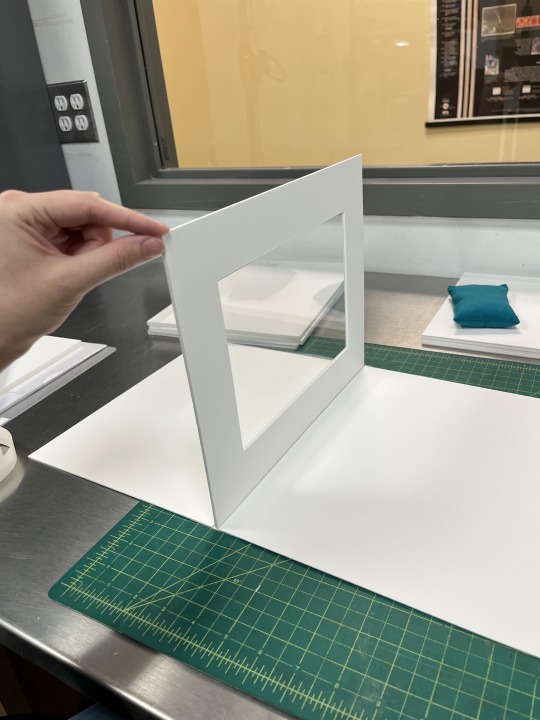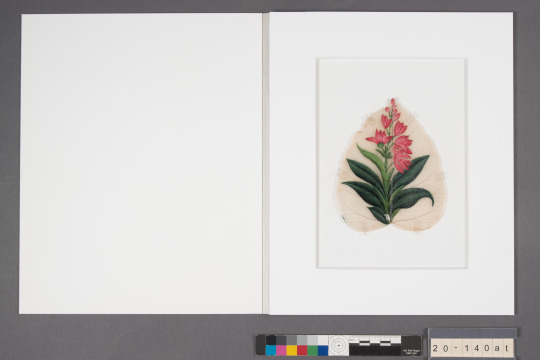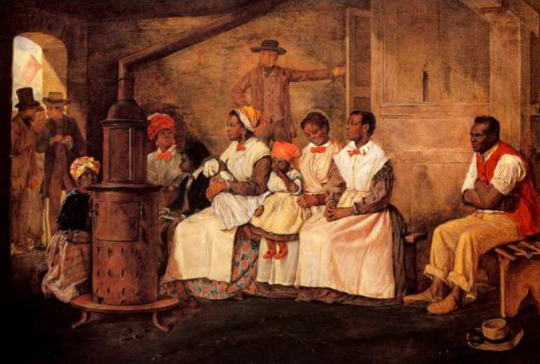#europe education for indian students
Text
https://www.edugoabroad.com/
europe education consultants
overseas education consultants
abroad education consultants
#Europeeducation#europe education for indian students#ahmedabad#india#overseas study consultants#study in france#study in uk#study in ireland#study in poland#study in denmark
0 notes
Text
#Overseas education consultants near me#Best study abroad consultants#Universities in ireland#Masters in Europe for indian students#Study in Germany consultants#Masters in France for indian students#Education in Italy for indian students#study abroad consultant for Europe#consultant for Finland#consultant for Sweden
0 notes
Text

#best abroad education consultancy#Study in Abroad#study in foreign country#study abroad consultants#study in uk#study in usa#study in europe#Study in germany#top education consultants in india#study in foreign country with scholarship#education consultants in hyderabad#best consultancy for germany in hyderabad#best overseas education consultants in hyderabad#education in Abroad#best educational consultancy#higher study in germany for indian students#best canada education consultants in hyderabad#study in uk for indian students#uk student visa consultants in Hyderabad#Best UK Education Consultants in Hyderabad#Best UK overseas education consultants in Hyderabad#Study in UK consultants in Hyderabad#Best consultancy for the USA in Hyderabad#USA abroad educational services in Hyderabad
1 note
·
View note
Text
Best Consultant for Europe Student Visa in Ahmedabad
Nationwide Overseas Education is esteemed as the best Europe student visa consultant in Ahmedabad. We provide guidance for scholarships, top course/university selection, visa application, financial assistance, etc. We empower students to achieve their goals and fulfill their dreams of study in Europe. Contact the best Europe education consultant today.
#europe student visa consultant in ahmedabad#europe study visa#student visa in europe#best consultant for europe study visa#study in europe consultants#europe study visa consultants#europe student visa consultants#europe study visa for indian#Nationwide Overseas Education
1 note
·
View note
Text
Preserving Leaf Paintings in an Anglo-Indian Commonplace Book, 1822-1825
Hello, I’m Alexa Machnik, a third-year graduate student at the Conservation Center, Institute of Fine Arts, NYU. I first came to the Barbara Goldsmith Preservation & Conservation Department in Fall 2022 as a student in the graduate course, Conservation in Context, taught by Laura McCann, Director of Preservation. During this course, we delved into the world of library conservation, exploring the value systems that guide preservation decision-making and treatment action in academic research libraries. One of my class projects involved rehousing delicate leaf paintings from an early 19th-century commonplace book, or friendship album, part of the Fales Library holdings in the Special Collections at NYU Libraries (figs. 1-2) [1]. In honor of Preservation Week, I will share the intriguing history of the book and discuss the decisions that were made to preserve the leaves.

Figure 1 [left]: Front cover of the commonplace book, bound in gold-tooled red morocco leather.
Figure 2 [right]: Ownership label of “Jane Harriet [Blechynden]” on front marbled pastedown.
The book in question was compiled by Jane Harriet Blechynden (1806-1827) in England between 1822 and 1825. It holds her personal collection of handwritten and acquired materials, with contributions from her sisters, Emma and Sarah, who wrote original poems about sisterhood, separation, and their Anglo-Indian ancestry. The three women were the daughters of a British merchant residing in Calcutta, and while born in India, they were educated in England [2]. There is not a great deal known about Jane Harriet’s life in England, but her impending return to India in 1825 is documented in an emotional verse by Emma (fig. 3):
“Thus in parting my sister we’re breaking a link / Which may ne’er be united again / And firm as that chain was ‘tis painful to think / That absence may send it twain.”

Figure 3: Excerpt from the original poem, “Parting and a Meeting,” signed by Emma.
Jane Harriet’s book offers insights into her personhood, social connections, and sensibilities as an artist and collector. In addition to written entries, she inserted a compendium of acquired materials–pressed flowers, her own original drawings, and numerous paintings–between pages of the book (figs. 4-6).

Figures 4-6 [left to right]: A small sampling of the ephemeral treasures found in the book, including a dried pressed flower, a drawing on pith possibly by Jane Harriet, and a cut-paper silhouette.
Notably, six of these paintings are executed on the dried leaves of the Bodhi tree, a sacred plant indigenous to Asia with distinct spade-shaped, long-tipped leaves (fig. 7) [3]. Although leaf painting has origins in Buddhist traditions, by the time Jane Harriet collected her leaf paintings, it had already evolved into a form of Chinese export art in Europe. Her leaves depict secular scenes of contemporary life in China and botanical subjects, which are typical of the export genre (fig. 8). Their inclusion in the book implies that Jane was among the many people who partook in the avid collecting of China trade goods during the first few decades of the 19th century, a time when European fascination for Chinese culture and art was at its peak.

Figure 7: A leaf painting, as found loose in the book and partially lifted to show the thin, translucent nature of the leaf support.

Figure 8: Another leaf painting from the book, oriented with the leaf tip at the bottom of the image, depicting flowers and a butterfly.
The initial rush of excitement that I felt at finding the leaf paintings soon turned to concern as I gave thought to their long-term preservation at NYU Libraries, where researchers are expected to handle the book. The leaf paintings were loose in between the pages, which raised a series of “what ifs” about the potential dangers they could encounter. What if the leaves slip from the book? What if they bend or break as the pages are turned? What if the painted surfaces become abraded? The paintings were made with opaque pigment-based watercolors on exceptionally delicate, skeletonized leaves that have been primed with a thin organic coating. Despite being intact, their inherent fragility means that they are vulnerable to even the slightest touch. After considerable discussion, the Conservation Unit decided that in order for the leaf paintings to be preserved and safely accessed by researchers, they should be housed separately from the book.
I thoroughly examined the condition of the leaves and the painted surfaces in order to make a housing recommendation. Despite some minor damage, all were in stable condition. Thus, the ideal housing would provide support to prevent any further damage, such as paint loss and leaf breakage, and at the same time allow the leaves to maintain their translucency. To achieve this, I opted to mount them in double-sided window mats with a support made from clear polyester film, or Mylar® [4]. The addition of the Mylar® would not only create a stable surface for the leaf paintings but also enable the viewing of both sides (fig. 9).

Figure 9: View of the double-sided window mat with a Mylar® support.
My next challenge was to figure out how to mount the leaves onto the Mylar® support without the use of adhesive [5]. After consulting with conservation staff and creating mock-ups, short, discreet Mylar® tabs were selected as the best option to secure them into place (figs. 10-11). For this process, I positioned a single leaf painting onto the support and selectively placed the tabs around its perimeter, making sure the tabs did not overlap any areas of paint. I then used a handheld spot-welding pen to fuse the tabs to the support. Since this process was done in-situ, near the leaf, it required lots of precision practice and encouragement from colleagues before I felt confident enough for the task.

Figure 10: Detail of a mounted leaf painting. Notice that the Mylar® tabs are welded just outside the leaf and extend minimally over the edges, holding it in place with gentle pressure.

Figure 11: The backside of a mounted leaf painting viewed through the Mylar® support. This gives researchers access to the painting’s verso, where an underdrawing and other signs of artistic process can be discerned.
At the time of writing this post, I successfully housed the six leaf paintings in their double-sided window mats (figs. 12-13). This housing project, while complete, is just one part of the ongoing effort to preserve the commonplace book, and the Conservation Unit is continuing work on other elements of the book to ensure its safe return to Special Collections.

Figure 12: Example of the completed housing, showing the front of a leaf painting.

Figure 13: Back of a leaf painting.
Though my involvement in the project has come to an end, I have gained a very special appreciation for the commonplace book and the preservation challenges it presents. The experience of learning directly from NYU Libraries Special Collections was especially invaluable, providing me with opportunities to participate in complex decision-making processes unique to large research libraries driven by user needs. Before signing off, I’d like to extend my gratitude to my supervisors, Laura McCann, Director, and Lindsey Tyne, Conservation Librarian, and the entire team at the Barbara Goldsmith Conservation Lab for their unwavering support and enthusiasm throughout this project. Thank you all very much!
Notes:
[1] A commonplace book is a centralized place for an individual to record information, whether it be their personal thoughts or quotes from outside literary sources. Friendship albums, by contrast, contain handwritten entries from the family, friends, or acquaintances of the owner (often female). Both forms of commonplacing sustained popularity in Europe and America throughout the 19th century. To learn more about this fascinating literary genre, see Jenifer Blouin, “Eternal Perspectives in Nineteenth-Century Friendship Albums,” The Hilltop Review, Vol. 9, Issue 1 (2016) and Victoria E. Burke, “Recent Studies in Commonplace Books,” English Literary Renaissance, Vol. 43, No. 1 (2013), 153-177.
[2] Much of what is known about Jane Harriet (also known in her family as Harriet) comes from the Blechynden papers in the British Library (Add. Mss. 45578-663). This large holding contains the diaries of her father, Richard (Add. Mss. 45581-653), and older brother, Arthur (Add. Mss. 45654-61). For a secondary account of the Blechynden household, see Peter Robb, Sentiment and Self: Richard Blechynden’s Calcutta Diaries, 1791-1822 (New Delhi: Oxford University Press, 2011).
[3] Michele Matteini, “Written on a Bodhi tree leaf,” Anthropology and Aesthetics, Vol. 75-76 (2021), 45-58.
[4] The design of the double-sided mats is based on an instructional guide made available by the Library of Congress. “Double-Sided Mat,” Library of Congress, accessed 1 February 2023.
[5] We chose not to use adhesives or traditional paper-hinging techniques to mount the leaf paintings for several reasons. As noted, the paintings are on fragile, non-paper-based supports that have an organic coating, which may be derived from plant gum. The leaf supports are thin, translucent, and highly vulnerable to breakage, so applying hinges directly with adhesive might permanently alter their appearance or risk further damage to the leaves over time, especially if they need to be removed from the housing in the future.
Photographs: Alexa Machnik
#NYULibraries#NYUSpecialCollections#FalesLibrary#nyuifa#nyuart#librarypreservation#libraryconservation#collectionscare#artconservation#paperconservation#bookconservation#artpreservation#preservingthepast#PreservationWeek#preservationweek2023
209 notes
·
View notes
Note
Hope this isn’t somehow an offensive question, but what’s the difference between Irish travelers and Romani people? I thought ‘travelers’ was another term for Romani, and that they were essentially the same thing? I’m not European so my knowledge of Roma people is all second hand
So, first of all, although I have some traveller ancestry (which is a whole separate complicated thing), I don't consider myself part of any of the groups covered by GRT and I didn't grow up within a traveller culture. I don't, unfortunately, know any Irish travellers on Tumblr, or I would direct this ask to them.
Irish travellers (also known as Mincéirí) are a distinct ethnic group who originate in Ireland. In UK, Irish and I believe EU law, Irish travellers have protections as an ethnic group.
Irish travellers have their own language and culture. The origin of Irish Traveller culture isn't entirely clear- possibly they are an ethnic group within Ireland who have never led a settled lifestyle OR they were group displaced from their land by English colonialism. However, they are genetically distinct from the "settled Irish" and are a separate ethnic group, legally and practically.
It's worth bearing in mind their language is a closed language and their culture, to an extent, is a closed culture.
Romani people are originally from the indian subcontinent, and travelled from India, through Asia, into Europe, and other parts of the world.
Both are nomadic groups, and they do have some cultural similarities, but in the UK at least, they regard themselves as separate racial groups (in fact, within the UK, there are multiple different groups of Romani as well, who regard themselves as somewhat separate) with distinct cultures- and I think it's really important to acknowledge that.
In the UK and Ireland they experience extremely high levels of prejudice, and they are sometimes grouped together under the heading of "GRT"- gypsy and romany travellers. This also includes other groups who live traveller lifestyles, but may not be genetically distinct from the settled population.
It's worth bearing in mind that some historical examples of prejudice, such as the holocaust specifically targeted Romani people only. However, in the UK, historically laws were made against "gypsies" and this therefore targeted both groups. Current issues, like the shortage of proper traveller sites, and the new laws against using stopping places and so on, and general prejudice target both groups. Generally, the same slurs are used to target both groups.
In the UK, historically, both groups have faced issues such as having their children removed and placed with settled families due to "homelessness".
Both groups are extremely discriminated against- sometimes surveys lump them in together, but a recent survey of ethnic minorities suggested that travellers (Irish and Romany together) experience the most racially motivated assaults of any ethnic minority in the UK. Which doesn't surprise me- I hear a lot of casual racism against travellers from people who'd never consider behaving that way towards any other ethnic group. P**** is the only racial slur I've ever actually heard used in my classrooms, for example, and I've heard it multiple times. It's also used as slang for stealing.
Surveys of educational outcomes distinguish between Romani and Irish travellers. Bear in mind it's difficult for these groups to access education if they live a traditional lifestyle. Romani children have the worst educational outcomes of any ethnic group in the UK, and Irish travellers are the second worst. The next lowest group is black-carribean, and their outcomes at GCSE are double that of Romani students. Irish travellers have outcomes which are less than 50% of the highest performing ethnic groups.
We know that Romani and Irish travellers are both disproportionately represented in the prison population in the UK. In Ireland, we know Irish travellers have a much lower life expectancy than other Irish groups.
Tl;DR- in the UK, travellers is a general term for anyone who travels, and this includes Irish travellers and Romani, who are both distinct ethnic/cultural groups.
42 notes
·
View notes
Text
favorite piece of disability history is Hand Talk. as i understand it, the history of sign language in settler society is one in which "home sign" - the private sign language of families with Deaf members - gave way to local signed argot as a constantly-developing spectrum of contact languages between different home signs, which gave way to the two major sign language families, French Sign Language and British Sign Language, in the late 18th century, when formal education for the deaf brought together people from so many areas that the formation of a contact pidgin was daunting.
(as a sidebar, this has the interesting side effect that despite both being glossed into and taking core elements of grammar and vocabulary from English, ASL and BSL are genetically unrelated, with radically different signing spaces, grammar, and approaches to novel words and phrases. both look not just like gibberish to native speakers of the other, but only barely recognizable as sign language at all.)
there's a wrinkle in that story, though. one of the first adopters of French Sign Language outside of France was a school for the deaf in America located in Massachusetts, which relied on the existing substrate of contact pidgins between home signs in New England.
which included a tremendous substrate of indigenous sign language.
native North America has one of those problems that can turn into opportunities in human history; it is blessed and cursed with hundreds, possibly once thousands, of languages. there are on the order of a dozen major language families indigenous to the borders of the united states. not languages, families. the eastern seaboard of the united states, an area approximately the size of western europe, contains five big enough to show up on a map, with some modern US states there containing as many as three. for context, you can go from Portuguese to Hindi without leaving indo-european, from Malay to Hawaiian without leaving austronesian. the only large areas with a similar density of language families i know of are Papua New Guinea and India (and, of course, South America).
in some limited areas this lead to spoken linguas franca. think Chinuk Wawa, the contact pidgin of the Pacific Northwest. these languages would be simple, easy to learn by outsiders to the language family, and with a dramatically reduced vocabulary, grammar, and sound inventory compared to their nearest relatives.
but this was not tremendously common east of the Rockies, because a signed lingua franca already existed. known as Hand Talk, it was understood by a wide cross-section of society - depending on the area, familiarity ranged from "specialists sign and understand Hand Talk for purposes of communication on long journeys" and "nearly everyone knows basic vocabulary in Hand Talk". it can be divided into a number of dialect areas, but all of them are at least slightly mutually intelligible and rely on similar signing spaces and approaches to signing words.
many more words are shared by Hand Talk and ASL than can be explained by coincidence, and to someone familiar with ASL elements of Hand Talk are surprisingly familiar, likely because ASL developed alongside an already quite mature and functional sign language and freely borrowed what its creators could comprehend. and during the 19th century "kill the Indian, save the man" era, schools to which ndn children were sent by the state would punish both Deaf and hearing students for using Hand Talk in the same ways they would punish them for using their own spoken or written languages. i am loath to use "cultural appropriation" in the usual sense generally, but it's hard to say anything else when settlers strip-mine a language for parts then try to exterminate it.
despite these efforts to extinguish it, Hand Talk still exists, having been signed continuously by Deaf and hearing speakers since time immemorial, and can be learned today. it is undergoing something of a revival at the moment. look it up! it's cool stuff. it strikes me as especially neat that, where European society tended to treat the Deaf as second-class citizens at the best of times and even now literacy in sign language is not commonplace, at one point indigenous societies across North America relied on sign language to communicate across vast distances and esteemed Deaf signers as the most fluent communicators by hand
57 notes
·
View notes
Text
Study in Georgia with Education World.

Georgia, a former Soviet republic situated at the junction of Europe and Asia, boasts stunning mountain villages and picturesque beaches along the Black Sea. Its capital and largest city, Tbilisi, serve as the hub of academic excellence for medical aspirants. Increasingly, Indian students are drawn to pursue MBBS in Georgia, attracted by its affordable fee structure and streamlined admission procedures. Tbilisi, with its remarkable 100% literacy rate, emerges as the prime destination for medical studies. Moreover, Georgia's reputation as the fourth safest country globally ensures a secure environment for living and learning. The country hosts several MCI-approved and WHO-recognized medical colleges, offering Indian students an enticing array of options. With no entrance test required, MBBS in Georgia promises a top-tier education at a reasonable cost, making it a highly sought-after choice for aspiring doctors from India
for more info visit our official site:-https://eduworldglobal.com/
2 notes
·
View notes
Text
Banning Books in a Free Society
Editorial by Jan van der Crabben
History has become a political battleground in the United States. Once globally seen as the beacon of freedom, some states are now in the process of deciding which parts of history are acceptable to be taught in schools, and which are not.

In the wake of this discussion, teachers have struggled with how to discuss slavery in history class, as ambiguous guidance has been issued by some school districts. Not too long ago, a school district in Texas has told its teachers that books must always contain opposing viewpoints, and books that do not shall be banned from school: “And make sure that if you have a book on the Holocaust,” teachers were instructed, “that you have one that has an opposing, that has other perspectives.” Understandably, one teacher asked: “How do you oppose the Holocaust?” No clarification was offered.
There are certain events in history for which there is no valid opposing viewpoint and I think we can all agree that “the Holocaust was a good thing” is not a viewpoint that any serious historian would present. The same is true for slavery, racism, genocide, or fascism. There are parts of history for which there is no “opposing viewpoint” because they are universally accepted to be immoral. Texas lawmaker and author of the bill State Sen. Bryan Hughes agrees and clarified that his bill does not apply to matters of “good and evil”.
In cases like this it is best to go back to the actual legislation that was passed in Texas. It’s a short document, so go ahead and read it. There are others in different states, but let’s look at this one for now. On the one hand, the bill requires educators to cover topics such as slavery, Frederick Douglass, the Underground Railroad, the Civil Rights Movement, the history of Native Americans, and the Indian Removal Act. It then requires teachers not to teach students anything racist or sexist, and students must not be told that they are responsible for actions committed in the past, and they must not be told to feel guilt or discomfort on the basis of their race. So far, so good; history can and should be taught without assignment of guilt or shame.
Teachers are required to present “diverse and contending perspectives”, which appears to have been the reason for this school district’s over-reaction on the Holocaust. Interestingly, the legislation singles out the 1619 Project as a topic that must not be taught! Led by the New York Times, the 1619 Project “aims to reframe the country’s history by placing the consequences of slavery and the contributions of black Americans at the very center of our national narrative”.

How can legislation ask teachers to present contending viewpoints but then specifically outlaw this particular viewpoint? This is precisely a “diverse and contenting” perspective compared to the classic narrative found in US History class, worthy of discussion: To what extent has slavery shaped the United States today? History is not meant to make us feel good; feeling a sense of discomfort about our past is a good thing as it will help us avoid the mistakes of our forebears. Despite all of the seemingly balanced requirements, it would appear that nationalism is the true purpose of the bill.
Free societies do not politicize history. All of history needs to be taught; the good, the bad, and the ugly. No nation’s history is untarnished. History class is uniquely positioned to teach the critical thinking skills that will allow students to disentangle misinformation and make up their own mind. The Council of Europe’s publication Quality History Education in the 21st Century (recommended reading) makes an excellent case for this:
“History is a specific subject as it provides the answers to critically understand the present, by teaching that any feature of the past must be interpreted in its historical context and by raising awareness that historical interpretation is a matter of debate. The thinking processes acquired through the study of history constitute a standard of judgement that is transferable to any subject. Hence, historical critical knowledge and understanding of political, social, cultural, and economical systems intersects with the democratic culture necessary for active citizenship.”
The current political climate in the United States hinders the learning of critical thinking skills that history class provides. Politicians should leave the teaching of history to educators who know what they’re doing.
106 notes
·
View notes
Text
Benefits of Paid Education in Croatia
Unilife Abroad Career Solutions

Benefits of Paid Education in Croatia
Safety
When it comes to public safety, Croatia is an example to be followed. In 2020, the US State Department ranked Croatia at the highest safety category, thanks to economic and political stability factors. The Croatian population can walk freely around their cities, enjoying the country without any significant safety concerns.
Affordable living
If you’re worried Croatia will be as expensive as other popular European destinations, you can rest easy. Croatia is cheaper than most countries in the European Union , and a single person can get by with just under US$800 per month. Rent for a one-bedroom apartment can be as low as $350, and general expenses such as electricity, water, and internet will amount to approximately $210. Keep in mind cooking your own food is cheaper than eating at restaurants and you’ll be able to enjoy a comfortable life in Croatia.
Job opportunities
Croatia has a great job market for locals and foreigners alike. Unemployment rates are low, and more than 50.000 foreigners find work in Croatia every year. Because of the high demand for workers in different sectors, the government allows international students to work in the country during their stay.
Multicultural environment
Croatia’s location makes access to the rest of Europe extremely easy. This easy connection to other countries makes Croatia a multicultural country, with visitors from different parts of the world who get to enjoy the country’s welcoming environment. Locals are friendly and patient with foreigners and will love to help you learn the local language during your stay.
Quality of life
There are many reasons why the quality of life in Croatia is so high. The country’s investment in high-quality education and public safety, plus its stable economy and affordable costs make Croatia one of the best countries in Europe to live in. In the larger cities, the population’s satisfaction is even higher, and international students can enjoy all the benefits of a Croatian lifestyle when they choose this beautiful country as their destination.
World-class research
Croatia is known for its history-making inventors including Nikola Tesla, Franjo Hanaman, and Slavoljub Penkala. The country invests heavily in innovation and research, which benefits entrepreneurs and academics alike. Students in engineering and technology-related fields, especially, will find in Croatia an ideal spot to develop new ideas among some of the brightest minds in the world.
Unilife abroad career solutions
Studying abroad is an important procedure, but it is no longer a difficult one. A good study abroad consultant assists students by advising them on the best time to apply for admission to a particular university. We advise Indian students who want to study abroad.
Contact us : 8428440444 , 8428999090 , 8608777070
Mail ID : [email protected] , [email protected]
2 notes
·
View notes
Text

Texas Jack Omohundro
Will Rogers, who died on this day in 1935, was the very definition of American.
Born to a Cherokee Nation family in Oologah, Indian Territory (now Oklahoma), Rogers joked that though his ancestors didn't come over on the Mayflower, they "met the boat".
Dog Iron Ranch, the property of Will's father Clement Vann Rogers, had as many as 10,000 Texas longhorns, and Will, the youngest of eight children, grew up in the saddle. An avid reader and good student, Will quickly decided that the saddle was more comfortable than the school desk, and, after dropping out of school in the 10th grade, worked his father's ranch full time.
When he was 22 years old, Will and a friend set off from Oklahoma to Argentina, sure that their cowboy skills would serve them well as gauchos on the Argentine Pampas. They bought a ranch and worked for five months before running out of money. Unwilling to return home and face his father's disappointment, Will boarded a boat to South Africa, where he got a job as a rancher at Mooi River Station.
Soon, a Wild West Circus passed through the area and Will Rogers went to see the show, intent on asking for a job handling the show's livestock. Rogers would later tell a reporter for the New York Times:
"Texas Jack had a little Wild West aggregation that visited the camps and did a tremendous business. I did some roping and riding, and Jack, who was one of the smartest showmen I ever knew, took a great interest in me. It was he who gave me the idea for my original stage act with my pony. I learned a lot about show business from him. He could do a bum act with a rope that an ordinary man couldn't get away with, and make the audience think it was great, so I used to study him by the hour, and from him, I learned the great secret of the show business—knowing when to get off. It's the fellow who knows when to quit that the audience wants more of."
This Texas Jack was not John B. Omohundro. Actually, no one, not even the man himself, knew this Texas Jack's real name. He was born sometime between 1863 and 1867, and his parents had been killed when their wagon train headed west was ambushed, reportedly by a Comanche raiding party. The child had been taken captive, along with two young girls from another family's wagon, but was rescued by the cowboy Texas Jack Omohundro, who delivered the children to a Kansas orphanage, selling the Comanche ponies to provide funding for the children's education. The boy grew up not knowing his name or the names of his parents, only knowing that the man who rescued him was called Texas Jack. After Omohundro's 1880 death, this young man showed up at the Omohundro home in Palmyra, Virginia, asking for the family's blessing to use his rescuer's name as he set off on his own venture into show business.
Initially called Texas Jack Junior, by the time he had established himself as a performer in America and Europe he dropped the "Junior" entirely. By the time Will Rogers asked for a job in Ladysmith, South Africa, his show was billed as Texas Jack's Wild West Circus. According to Rogers, he asked the circus owner if he was really from Texas, if he was related to the famous Texas Jack from the dime novels, and if he had any jobs wrangling horses for the show. Jack Jr. asked the young man if he could put together a rope trick act. The young man said he believed he could and Jack Jr. hired him on the spot, suggesting the young performer adopt the nickname “The Cherokee Kid”. Performing the same lasso act that Texas Jack Omohundro introduced to the world thirty years earlier, this was Will Rogers’ first job in show business.
Will Rogers died in a plane crash with aviation pioneer Wiley Post in Alaska on August 15th, 1935. Before his death, the State of Oklahoma commissioned a statue of him to place in the United States Capital's National Statuary Hall collection. Rogers agreed on the condition that his statue face the House Chamber so that Rogers could "keep an eye on Congress." Since the statue's installation in 1939, each President of the United States of America has rubbed the Will Rogers statue's left foot for good luck before stepping into the House Chamber to deliver the State of the Union address.
[Pictured from left to right: Texas Jack Junior, Lyle Marr (TJ Jr's wife), Clarence Welby Cooke, and Will Rogers.]
5 notes
·
View notes
Text
#Overseas education consultants near me#Best study abroad consultants#Universities in ireland#Masters in Europe for indian students#Study in Germany consultants#Masters in France for indian students#Education in Italy for indian students#study abroad consultant for Europe#consultant for Finland#consultant for Sweden
1 note
·
View note
Text
Bessie Coleman

By
Jone Johnson Lewis
Updated on January 31, 2018
Bessie Coleman, a stunt pilot, was a pioneer in aviation. She was the first African American woman with a pilot's license, the first African American woman to fly a plane, and the first American with an international pilot's license. She lived from January 26, 1892 (some sources give 1893) to April 30, 1926
Early Life
Bessie Coleman was born in Atlanta, Texas, in 1892, tenth of thirteen children. The family soon moved to a farm near Dallas. The family worked the land as sharecroppers, and Bessie Coleman worked in the cotton fields.
Her father, George Coleman, moved to Indian Territory, Oklahoma, in 1901, where he had rights, based on having three Indian grandparents. His African American wife, Susan, with five of their children still at home, refused to go with him. She supported the children by picking cotton and taking in laundry and ironing.
Susan, Bessie Coleman's mother, encouraged her daughter's education, though she was herself illiterate, and though Bessie had to miss school often to help in the cotton fields or to watch her younger siblings. After Bessie graduated from eighth grade with high marks, she was able to pay, with her own savings and some from her mother, for a semester's tuition at an industrial college in Oklahoma, Oklahoma Colored Agricultural and Normal University.
When she dropped out of school after a semester, she returned home, working as a laundress. In 1915 or 1916 she moved to Chicago to stay with her two brothers who had already moved there. She went to beauty school, and became a manicurist, where she met many of the "Black elite" of Chicago.
Learning to Fly
Bessie Coleman had read about the new field of aviation, and her interest was heightened when her brothers regaled her with tales of French women flying planes in World War I. She tried to enroll in aviation school, but was turned down. It was the same story with other schools where she applied.
One of her contacts through her job as a manicurist was Robert S. Abbott, publisher of the Chicago Defender. He encouraged her to go to France to study flying there. She got a new position managing a chili restaurant to save money while studying French at the Berlitz school. She followed Abbott's advice, and, with funds from several sponsors including Abbott, left for France in 1920.
In France, Bessie Coleman was accepted in a flying school, and received her pilot's license—the first African American woman to do so. After two more months of study with a French pilot, she returned to New York in September, 1921. There, she was celebrated in the Black press and was ignored by the mainstream press.
Wanting to make her living as a pilot, Bessie Coleman returned to Europe for advanced training in acrobatic flying—stunt flying. She found that training in France, in the Netherlands, and in Germany. She returned to the United States in 1922.
Bessie Coleman, Barnstorming Pilot
That Labor Day weekend, Bessie Coleman flew in an air show on Long Island in New York, with Abbott and the Chicago Defender as sponsors. The event was held in honor of Black veterans of World War I. She was billed as "the world's greatest woman flyer."
Weeks later, she flew in a second show, this one in Chicago, where crowds lauded her stunt flying. From there she became a popular pilot at air shows around the United States.
She announced her intent to start a flying school for African Americans, and began recruiting students for that future venture. She started a beauty shop in Florida to help raise funds. She also regularly lectured at schools and churches.
Bessie Coleman landed a movie role in a film called Shadow and Sunshine, thinking it would help her promote her career. She walked away when she realized that the depiction of her as a Black woman would be as a stereotypical "Uncle Tom." Those of her backers who were in the entertainment industry in turn walked away from supporting her career.
In 1923, Bessie Coleman bought her own plane, a World War I surplus Army training plane. She crashed in the plane days later, on February 4, when the plane nose-dived. After a long recuperation from broken bones, and a longer struggle to find new backers, she finally was able to get some new bookings for her stunt flying.
On Juneteenth (June 19) in 1924 , she flew in a Texas air show. She bought another plane—this one also an older model, a Curtiss JN-4, one that was low-priced enough that she could afford it.
May Day in Jacksonville
In April, 1926, Bessie Coleman was in Jacksonville, Florida, to prepare for a May Day Celebration sponsored by the local Negro Welfare League. On April 30, she and her mechanic went for a test flight, with the mechanic piloting the plane and Bessie in the other seat, with her seat belt unbuckled so that she could lean out and get a better view of the ground as she planned the next day's stunts.
A loose wrench got wedged in the open gear box, and the controls jammed. Bessie Coleman was thrown from the plane at 1,000 feet, and she died in the fall to the ground. The mechanic could not regain control, and the plane crashed and burned, killing the mechanic.
After a well-attended memorial service in Jacksonville on May 2, Bessie Coleman was buried in Chicago. Another memorial service there drew crowds as well.
Every April 30, African American aviators—men and women—fly in formation over Lincoln Cemetery in southwest Chicago (Blue Island) and drop flowers on Bessie Coleman's grave.
Legacy of Bessie Coleman
Black flyers founded the Bessie Coleman Aero Clubs, right after her death. the Bessie Aviators organization was founded by Black women pilots in 1975, open to women pilots of all races.
In 1990, Chicago renamed a road near O'Hare International Airport for Bessie Coleman. That same year, Lambert - St. Louis International Airport unveiled a mural honoring "Black Americans in Flight," including Bessie Coleman. In 1995, the U.S. Postal Service honored Bessie Coleman with a commemorative stamp.
In October, 2002, Bessie Coleman was inducted into the National Women's Hall of Fame in New York.
14 notes
·
View notes
Text
30 Covers, 30 Days 2022: Day 2

Welcome to day two of 30 Covers, 30 Days! Let’s go back to the 1700′s and meet Clara the rhinoceros in the Historical novel of R. Unicornis by Jillian Forsberg! This great cover was designed by returning designer, Joe Schwartz.
R. Unicornis
Based on true events. A Dutch sea captain decides to abandon his life with the VOC and takes his most precious cargo yet back to Europe: an Indian rhinoceros. His wondrous adventures traipse through Europe in the mid 18th century, and Clara the rhino inspires art, royalty, and science leaving a legacy of the rhinoceros unicornis unlike any other animal.
About the Author
Jillian Forsberg holds a masters in Public History from Wichita State University. Her passions include vintage dresses, empty museums, hand-written letters, gardening, and obscure histories waiting to be told. She lives in Wichita with her husband, daughter, and hairless cats. This is her first novel.

About the Designer
Joe Schwartz is honored to have been invited back to design a cover for NaNoWriMo - his fifth one! Joe is happiest when he's flexing his "design muscles" but when he's not creating, he is a design teacher at Spotswood High School and an adjunct professor of design history at Kean University's Michael Graves College, both in New Jersey. He is also the co-founder of DESIGN-ED, an education nonprofit that helps teachers and students use design as a tool for teaching and learning.
A small portfolio of Joe's work (including past NaNoWriMo covers) can be found here.
30 notes
·
View notes
Text
Study MBBS IN Russia the Top Universities

Study MBBS IN Russia the Top Universities
Russia has become one of the most popular education systems for medical practices for Indian students in recent times. It offers high-quality education and world-class medical education at a minimum cost.
The medical universities in Russia to study MBBS are considered amongst the best in the world and provide a massive platform for candidates who wish to study MBBS in Russia. As a country, Russia offers a safe and secure environment for Indian candidates.
Russian Universities provide a comprehensive timetable and syllabus which includes the latest advancements in medicine. Medical aspirants get an opportunity to learn from experienced lecturers (who are experts in their respective fields). In addition to this, Russian universities also provide the necessary equipment and resources to help candidates prepare for their MBBS exams and NEXT exams.
Eligibility of Study MBBs in Russia
Students have at least 50% aggregate in +12 and NEET Qualified
MBBS Course Duration
6 years
Medium of Instruction
English
Cost of Living
INR 12,000/ Month
MBBS FEE in Russia
INR 15 Lakhs – INR 50 Lakhs
NMC Recognition
YES
MBBS in Russia for Indian Students
Those studying MBBS in Russia can return to India, and about 10,000 scholars are studying MBBS courses in non-pricey 48 Medical Council of India accredited Russian countries Universities. Many have resided abroad, working in different hospitals after completing their MBBS Abroad studies in Europe.
There is no entrance examination held for studying MBBS Education in Russian universities. Only the thing is that the students should have to clear the NEET entrance test. The age of the students should be 17 years on or before 31st December of the year of the admission process. The students should have an aggregate of 50% in +12 for General Candidates and 40% for reserved category candidates. Before applying for MBBS in Russian universities, the students must submit a nationality certificate.
Why study MBBS in Russia
The Russian Universities don’t demand any unfair Donations.
The MBBS FEEs in Russia Universities are budget-friendly.
There are NMC Approved Russia Medical college universities.
Russia Medical Universities’ syllabus is of a very high standard.
IELTS & TOEFL is not compulsory for Russian MBBS Colleges and Universities.
The MBBS students will get the Lectures from well-equipped modern laboratories.
The Russia College’s universities are recognized by associations like UNESCO, WHO NMC, etc.
Indian candidates are relatively safe in Russia country.
MBBS Admission in Russia
Students should visit or call any of the offices or Representatives for free admission counseling processes. Candidates will get complete information concerning medical universities in Russia, course fees, and eligibility criteria.
Initially, the candidates have to submit all the below documents.
Scanned copy of the +12 pass certificate
Scanned copy of +12 Mark Sheet
Scanned copy of the 10th pass Certificate
Scanner copy of 10th mark sheet
Submit NEET Result and Admit Card
Scanned Copy of the Passport on the front page and back pages
6 Passport Sized Color photographs
#A2ZDoctors#MBBS#NEETUG2023#NEET2023#careercounselling#careeradvioser#education#MBBSCareer#Admissionprocedure#counsellingprocedure#Russia
3 notes
·
View notes